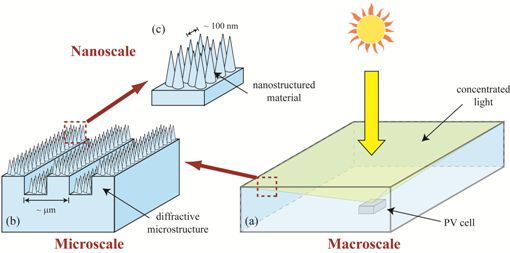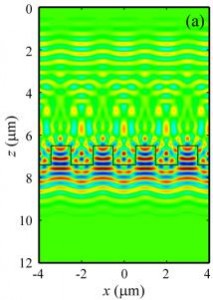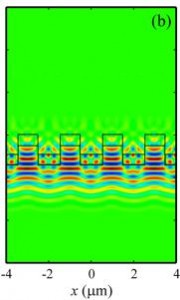
In this research area we investigate the integration of nanostructures on micro/macroscale systems. The goal is to enhance the performance and functionalize such systems with unique properties of nanostructures. This multi-scale approach enables physical response for all incorporated lengthscales. Potential application includes integrated diffractive solar concentrators.
Gradient-Index Antireflection Diffractive Optics
Similiar to planar surfaces, diffractive optical elements also suffers from Fresnel losses which takes the form of reflected diffracted orders. Using the same bio-inspired principles, it is possible to design a nanostructured gradient-index (GRIN) medium where the reflected orders can be suppressed, transfering all energy into transmissed orders [1]. The above figure illustrates the simulated electric field magnitude of reflected orders for a diffraction grating without (left) and with (right) the optimized nanostructures (click on figures to show simulated movie).

Such a nanostructured GRIN element can be fabricated using a combined lithographic and self-assembly approach, as shown in the above figure. The micrographs depict a diffractive microstructure with engineered nanoscale surface texture. The Fresnel losses are over two orders of magnitude lower than a traditional element over broad wavelength band and large incident angles [2].
References
[1] C.-H. Chang, L. Waller, and G. Barbastathis, “Design and optimization of broadband wide-angle antireflection structures for binary diffractive optics,” Optics Letters, 35, 907-909 (2010). [link] [pdf]
[2] C.-H. Chang, J. A. Dominguez-Caballero, H. J. Choi, and G. Barbastathis, “Nanostructured gradient-index antireflection diffractive optics,”Optics Letters, 36, 2354-2356 (2011). [link] [pdf]

